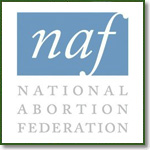
And if you google the term “TRAP laws,” you’ll discover a cruel irony: The so-called pro-choice movement wants to “keep” abortion “safe, legal” and rare“, but they’ll wail and gnash their teeth when lawmakers call for increased scrutiny of abortion clinics, so we have to wonder how concerned they really are about women’s safety.
Take, for instance, the National Abortion Federation (NAF). The very first sentence on the NAF’s page on TRAP bills defines them as those which “single out abortion clinics for unnecessary, politically motivated, restrictive regulations.” Such “onerous requirements,” NAF complains, “are also unnecessary because abortion clinics are already highly regulated.”
Later, they return to the use of the adjective “unnecessary” and, for good measure, slap on “burdensome” to describe “regulations on clinics that are irrelevant to the functionality and safety of abortion practice.”
NAF’s Utter Contempt for Abortion Clinic Regulations
You may recall that when abortionist Kermit Gosnell’s infamous “House of Horrors” in West Philadelphia was raided by the DEA in 2010, it hadn’t been inspected in 17 years. Clearly, if there was a state that needed to get its act together and step up its oversight of abortion clinics, it was Pennsylvania.
And once the macabre findings from Gosnell’s charnel house were made public, lawmakers in Pennsylvania did enact legislation that ensures, among other things, that state inspectors will visit abortion clinics regularly.
It’s telling, then, that the very first state that NAF cites on its page bemoaning TRAP laws is none other than Pennsylvania. (And as an aside, it’s also worth noting that the Gosnell Grand Jury scolded NAF for knowing about the horrifying conditions within Gosnell’s facility in late 2009 but neglecting to contact authorities).
Of course, if the National Abortion Federation is right, then the increased scrutiny of abortion clinics will prove to be “unnecessary.”
But is it?
The Proof Is in the Inspection Reports
For a clear example of why close oversight of abortion clinics is necessary, consider the example of Planned Parenthood’s York Center abortion facility, located in the city of York, Pennsylvania.
On June 20th, 2013 the Pennsylvania Department of Health inspected Planned Parenthood’s York Center. Compared to the inspection of the previous year, this year’s inspection went quite well. The numerous significant violations brought to light during the June 2012 inspection had pushed the clinic to make the the decision to become a “Class A” abortion clinic with a lower standard than the “Class B” surgicenter license than had originally been sought.
This year’s inspection found two violations, and both were significant as they were both related to safety of patients at the facility (as opposed to paperwork or building codes).
First, there was no IV cut down instrument tray. Second, that there was no oxygen in the oxygen tanks.
What’s interesting is the explanation that Planned Parenthood staffers gave in response to being cited for these violations. They claimed that “the cut down tray instruments were in the facility but not packaged as a cut down tray unit.”
Seriously.
In an emergency (which is the only time a cut down is done — i.e., when a patient is in grave danger of bleeding to death) the pack has to have all the various instruments and supplies needed to do the cut down immediately. It goes without saying that in an emergency, the last thing clinic staff should be doing is running around the clinic and looking for all the necessary instruments.
But as a result of this year’s inspection, all the instruments were gathered for the cut down tray, which Planned Parenthood claims is now centrally located.
As for the oxygen tanks being empty, Planned Parenthood claimed that the tanks were actually full, but that the Planned Parenthood employee who was questioned by state inspectors about the tanks did not know how to operate them. Full stop.
An empty oxygen tank is, of course, useless. A full oxygen tank that cannot be operated is also, of course, equally useless.
Yet, the facility’s plan of correction did mention that staff members were trained in the use of the tanks when the oxygen supply company came out the next day.
So now, as a direct result of a state inspection, an abortion clinic that had no IV cut down tray or operable oxygen tanks now has both.
Surely, the National Abortion Federation would agree that IV cut down trays and oxygen tanks that actually work are hardly “irrelevant to the functionality and safety of abortion practice.” Yet without the increased oversight of abortion clinics — which the NAF opposes tooth and nail — the inspection that found these violations at Planned Parenthood’s York Center wouldn’t have happened.
It’s Little Wonder Why Abortion Clinics Don’t Like Being Inspected
Some inspections will actually close down abortion clinics. Others will reveal that the operators really don’t have the safety of women foremost in their minds.
That it is necessary for state inspectors to show a medical facility how to protect their patients speaks to the tendency of all human beings to be lazy, but especially to the clinic’s lack of respect for life. It should come as no surprise that those who would cut babies into pieces may find it difficult to show much concern for the lives of their mothers.
